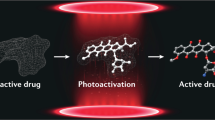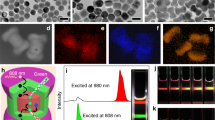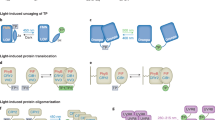Abstract
Light-activated gene transduction (LAGT) is an approach to localize gene therapy via preactivation of cells with UV light, which facilitates transduction by recombinant adeno-associated virus vectors. Previous studies demonstrated that UVC induces LAGT secondary to pyrimidine dimer formation, whereas UVA induces LAGT secondary to reactive-oxygen species (ROS) generation. However, the empirical UVB boundary of these UV effects is unknown. Thus, we aimed to define the action spectra for UV-induced LAGT independent of DNA damage and determine an optimal wavelength to maximize safety and efficacy. UV at 288, 311 and 320 nm produced significant dose-dependent LAGT effects, of which the maximum (800-fold) was observed with 4 kJ m−2 at 311 nm. Consistent with its robust cytotoxicity, 288 nm produced significantly high levels of DNA damage at all doses tested, whereas 311, 320 and 330 nm did not generate pyrimidine dimers and produced low levels of DNA damage detected by comet assay. Although 288 nm failed to induce ROS, the other wavelengths were effective, with the maximum (10-fold) effect observed with 30 kJ m−2 at 311 nm. An in vivo pilot study assessing 311 nm-induced LAGT of rabbit articular chondrocytes demonstrated a significant 6.6-fold (P<0.05) increase in transduction with insignificant cytotoxicity. In conclusion, 311 nm was found to be the optimal wavelength for LAGT on the basis of its superior efficacy at the peak dose and its broad safety range that is remarkably wider than the other UV wavelengths tested.
This is a preview of subscription content, access via your institution
Access options
Subscribe to this journal
Receive 12 print issues and online access
$259.00 per year
only $21.58 per issue
Buy this article
- Purchase on Springer Link
- Instant access to full article PDF
Prices may be subject to local taxes which are calculated during checkout







Similar content being viewed by others
References
Evans C, Ghivizzani S, Robbins P . Gene therapy of the rheumatic diseases: 1998 to 2008. Arthritis Res Ther 2009; 11: 209.
Evans C, Ghivizzani S, Robbins P . Orthopedic gene therapy in 2008. Mol Ther 2008; 17: 231–244.
Evans C, Robbins P . Potential treatment of osteoarthritis by gene therapy. Rheum Dis Clin N Am 1999; 25: 333–344.
Goater J, Muller R, Kollias G, Firestein GS, Sanz I, O'Keefe RJ et al. Empirical advantages of adeno associated viral vectors in vivo gene therapy for arthritis. J Rheumatol 2000; 27: 983–989.
Ulrich-Vinther M . Gene therapy methods in bone and joint disorders. Acta Orthop 2007; 78: 2–64.
Brockes J, Kumar A . Appendage regeneration in adult vertebrates and implications for regenerative medicine. Science 2005; 310: 1919.
Lee K, Chan C, Patil N, Goodman S . Cell therapy for bone regeneration--bench to bedside. J Biomed Mater Res B Appl Biomater 2008; 89: 252–263.
Schwarz EM . The adeno-associated virus vector for orthopaedic gene therapy. Clinical Orthop 2000: S31–S39.
Ferrari FK, Samulski T, Shenk T, Samulski RJ . Second-strand synthesis is a rate-limiting step for efficient transduction by recombinant adeno-associated virus vectors. J Virol 1996; 70: 3227–3234.
Fisher KJ, Gao GP, Weitzman MD, DeMatteo R, Burda JF, Wilson JM . Transduction with recombinant adeno-associated virus for gene therapy is limited by leading-strand synthesis. J Virol 1996; 70: 520–532.
Dai J, Rabie ABM . Gene therapy to enhance condylar growth using rAAV-VEGF. Angle Orthodo 2008; 78: 89–94.
Ulrich-Vinther M . Gene therapy methods in bone and joint disorders. Evaluation of the adeno-associated virus vector in experimental models of articular cartilage disorders, periprosthetic osteolysis and bone healing. Acta Orthop Suppl 2007; 78: 1–64.
Hauck B, Zhao W, High K, Xiao W . Intracellular viral processing, not single-stranded DNA accumulation, is crucial for recombinant adeno-associated virus transduction. J Virol 2004; 78: 13678–13686.
Alexander I, Russell D, Spence A, Miller A . Effects of gamma irradiation on the transduction of dividing and nondividing cells in brain and muscle of rats by adeno-associated virus vectors. Hum Gene Ther 1996; 7: 841–850.
Koeberl DD, Alexander IE, Halbert CL, Russell DW, Miller AD . Persistent expression of human clotting factor IX from mouse liver after intravenous injection of adeno-associated virus vectors. Proc Natl Acad Sci USA 1997; 94: 1426–1431.
Maloney M, Goater J, Parsons R, Ito H, O'Keefe R, Rubery P et al. Safety and efficacy of ultraviolet-a light-activated gene transduction for gene therapy of articular cartilage defects. J Bone Joint Surg 2006; 88: 753–761.
Lemay M, Wood KA . Detection of DNA damage and identification of UV-induced photoproducts using the Comet assay kit. Biotechniques 1999; 27: 846–851.
Collins AR . Single cell gel electrophoresis: detection of DNA damage at different levels of sensitivity. Electrophoresis 1999; 20: 2133–2138.
Brittberg M, Nilsson A, Lindahl A, Ohlsson C, Peterson L . Rabbit articular cartilage defects treated with autologous cultured chondrocytes. Clinical Orthop 1996; 326: 270–283.
Bhosale A, Richardson J . Articular cartilage: structure, injuries and review of management. Br Med Bull 2008; 87: 77–95.
Hunziker E . Articular cartilage repair: basic science and clinical progress. A review of the current status and prospects. Osteoarthritis Cartilage 2002; 10: 432–463.
Bénazet JD, Zeller R . Vertebrate limb development: moving from classical morphogen gradients to an integrated 4-dimensional patterning system. Cold Spring Harb Perspect Biol 2009; 1: a001339.
Brockes JP . Amphibian limb regeneration: rebuilding a complex structure. Science 1997; 276: 81–87.
Kielbassa C, Roza L, Epe B . Wavelength dependence of oxidative DNA damage induced by UV and visible light. Carcinogenesis 1997; 18: 811–816.
Demple B, Harrison L . Repair of oxidative damage to DNA: enzymology and biology. Annu Rev Biochem 1994; 63: 915–948.
Duan D, Sharma P, Dudus L, Zhang Y, Sanlioglu S, Yan Z et al. Formation of adeno-associated virus circular genomes is differentially regulated by adenovirus E4 ORF6 and E2a gene expression. J Virol 1999; 73: 161–169.
Zhang Y, Ma WY, Kaji A, Bode AM, Dong Z . Requirement of ATM in UVA-induced signaling and apoptosis. J Biol Chem 2002; 277: 3124–3131.
Kay ERM, Simmons NS, Dounce AL . An improved preparation of sodium desoxyribonucleate. J Am Chem Soc 1952; 74: 1724–1726.
Perry S, Epstein L, Gelbard H . In situ trypan blue staining of monolayer cell cultures for permanent fixation and mounting. Biotechniques 1997; 22: 1020–1024.
Olive P, Wlodek D, Banath J . DNA double-strand breaks measured in individual cells subjected to gel electrophoresis. Cancer Res 1991; 51: 4671.
Batista L, Roos W, Kaina B, Menck C . p53 mutant human glioma cells are sensitive to UV-C-induced apoptosis due to impaired cyclobutane pyrimidine dimer removal. Mol Cancer Res 2009; 7: 237.
Ito H, Goater JJ, Tiyapatanaputi P, Rubery PT, O’Keefe RJ, Schwarz EM . Light-activated gene transduction of recombinant adeno-associated virus in human mesenchymal stem cells. Gene Therapy 2004; 11: 34–41.
Acknowledgements
We thank Vera Gorbunova, Andrei Seluanov and Olga Smirnova for technical advice and Erik R. Sampson, Barbara Stroyer, Echoe Bouta and Calvin Yoon for technical help. This work was funded by LAGeT LLC and a NIH R43 grant (AR57589). The work was conducted at the Center of Institute Ventures at the Institute of Optics at the University of Rochester.
Author information
Authors and Affiliations
Corresponding author
Ethics declarations
Competing interests
M Myakishev-Rempel is an employee of LAGeT LLC. J Kuper is a consultant of LAGeT LLC and has equity in the company. EM Schwarz is president and founder of LAGeT LLC. The remaining authors declare no conflict of interest.
Rights and permissions
About this article
Cite this article
Myakishev-Rempel, M., Kuper, J., Mintz, B. et al. Investigation of the peak action wavelength of light-activated gene transduction. Gene Ther 18, 1043–1051 (2011). https://doi.org/10.1038/gt.2011.47
Received:
Revised:
Accepted:
Published:
Issue Date:
DOI: https://doi.org/10.1038/gt.2011.47



